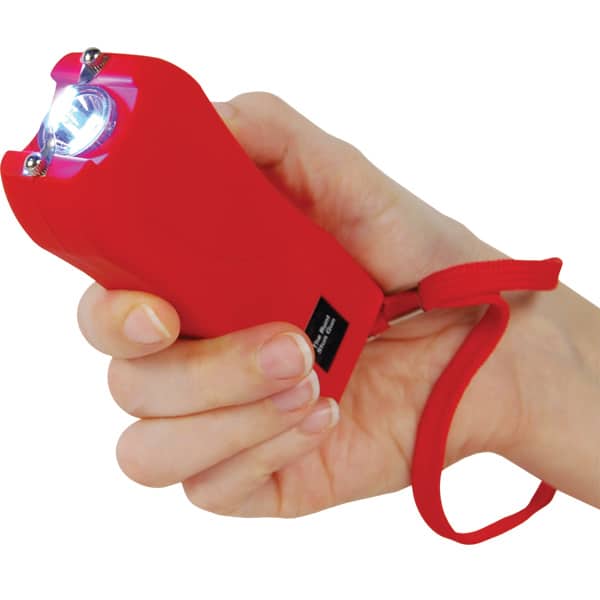
Brainstorm Security Shop

For Orders Over $99

On Any Of Our Products

Details On Refund Page

Imagine a scenario where a teacher is faced with a sudden threat in the classroom, and pepper spray could be the line of defense that makes a crucial difference. The concept of teachers carrying pepper spray for self-protection is not without controversy, yet the potential benefits and considerations surrounding its use are worthy of exploration. As you consider the implications of such a tool in educational settings, the nuances of training, legality, and ethical dilemmas come into play. How can pepper spray fit into the complex landscape of school safety measures?
Pepper spray provides teachers with a non-lethal self-defense tool that can effectively deter potential threats in emergency situations. It serves as a crucial safety measure, offering teachers a means to protect themselves and their students in the event of an attack. By having pepper spray on hand, educators are empowered with a practical self-defense option that can be quickly deployed to neutralize a threat, providing a sense of security and confidence in their ability to respond to dangerous situations.
In terms of classroom protection, pepper spray acts as a proactive measure to enhance security within educational settings. It serves as a deterrent that can discourage potential aggressors, thereby reducing the likelihood of violent incidents occurring on school premises. This proactive approach to safety can help create a more secure learning environment for both teachers and students, promoting a sense of well-being and preparedness in the face of unforeseen threats.

Considering the potential risks and limitations, it’s important to acknowledge certain drawbacks associated with the use of pepper spray in educational settings. Safety concerns and liability issues are significant factors to consider when implementing pepper spray as a self-defense tool for teachers. Misuse or accidental discharge can lead to unintended harm, legal repercussions, and damage to relationships with students, parents, and the community.
Moreover, the psychological effects of pepper spray on both the recipient and those witnessing its use can be distressing and have lasting consequences. It may escalate rather than de-escalate a situation, hindering the establishment of trust and a positive learning environment. Educators should prioritize de-escalation techniques and conflict resolution strategies over relying solely on pepper spray for protection.
Incorporating pepper spray into school safety protocols requires careful consideration of its implications and the necessity of thorough training. While it can be a tool in extreme situations, its drawbacks highlight the importance of comprehensive safety measures and prioritizing non-violent conflict resolution approaches in educational settings.
Educators must be mindful of the legal implications surrounding the use of self-defense tools in school settings. When considering using pepper spray or any self-defense tool, it’s crucial to familiarize yourself with school policies regarding the possession and use of such items. School policies often outline specific guidelines for self-defense measures, including pepper spray, and failing to adhere to these policies can lead to serious consequences.
Liability is a significant concern for educators when it comes to using pepper spray for protection. While the intention may be to enhance safety, there’s a risk of legal repercussions if the use of pepper spray is deemed inappropriate or excessive. Educators must be well-versed in the laws governing self-defense in their state to avoid potential legal issues.
Understanding the legal considerations surrounding the use of pepper spray is essential for educators looking to enhance their protection in school settings. By staying informed about school policies and liability concerns, educators can better navigate the complex legal landscape while prioritizing the safety of themselves and their students.
The efficacy of pepper spray as a defensive tool within school environments warrants careful evaluation and consideration. When it comes to safety measures in schools, having effective self-defense options for teachers is crucial.
Pepper spray can serve as a non-lethal means of protection, allowing educators to create a safer environment for themselves and their students. Pepper spray is known for its quick and potent effects, providing a temporary incapacitation of an attacker, giving the teacher a chance to escape or seek help.
Its ease of use and accessibility make it a practical self-defense tool for educators who may not have extensive training in physical combat. While pepper spray can be effective in deterring potential threats, it’s essential for teachers to understand its limitations.
Proper training on when and how to use pepper spray is vital to ensure its effectiveness and prevent accidents. Incorporating pepper spray into safety protocols can enhance overall security measures within schools, offering teachers a valuable tool in protecting themselves and their students.
To ensure the effective use of pepper spray as a self-defense tool in schools, teachers must undergo specific training requirements. Training certification is essential to equip teachers with the necessary skills to handle crisis situations effectively. This certification should include comprehensive instruction on safety precautions to prevent misuse or accidents in the school environment.
Teachers should be trained in crisis management techniques, enabling them to assess threats and respond appropriately to ensure the safety of themselves and their students. Moreover, instruction in self-defense techniques is crucial to empower teachers to protect themselves and others in emergency situations.
During training, emphasis should be placed on proper handling and deployment of pepper spray to maximize its effectiveness while minimizing risks. Teachers must understand the importance of using pepper spray as a last resort and be aware of the legal considerations surrounding its use.

Consider the ethical implications and potential impact on classroom dynamics when incorporating pepper spray as a self-defense tool for teachers. Student safety is paramount, and while pepper spray may provide a sense of security, it raises concerns about trust within the classroom environment.
Introducing a weapon-like tool can potentially erode the sense of a safe and nurturing space. Moreover, classroom management and conflict resolution strategies may be affected. The presence of pepper spray could alter the power dynamics between teachers and students, leading to escalated confrontations rather than peaceful resolutions.
It may inadvertently communicate a message of fear and aggression rather than fostering a culture of respect and understanding. Before implementing pepper spray, thorough consideration of its implications on student-teacher relationships, the learning environment, and overall school ethos is essential.
Alternative methods of ensuring teacher safety and addressing behavioral challenges should be explored to maintain a positive and constructive classroom atmosphere.
Exploring non-lethal self-defense methods is crucial for teachers seeking alternatives to pepper spray in maintaining classroom safety and discipline. When considering non-lethal options, teachers can turn to various self-defense techniques that can effectively deter threats without causing harm.
One such technique is self-defense training, which empowers educators to protect themselves and their students using physical tactics like blocking, striking, and grappling.
Additionally, implementing de-escalation strategies can be highly beneficial in diffusing tense situations before they escalate. These strategies involve remaining calm, using verbal communication effectively, and practicing active listening to understand the root of the issue.
Furthermore, creating a safe and structured learning environment can serve as a preventive measure against potential disruptions. Establishing clear expectations, consistent routines, and positive relationships with students can help minimize the likelihood of conflicts arising.
Implementing proper techniques for pepper spray deployment is essential for ensuring effective self-defense in emergency situations. Safety protocols must be strictly followed when using pepper spray as a defensive tool. Before deploying pepper spray, teachers should undergo training on its proper use and familiarize themselves with different deployment techniques.
It’s crucial to aim for the attacker’s face, specifically the eyes, to maximize the spray’s effectiveness and create an opportunity to escape.
School policies regarding the possession and deployment of pepper spray should be clearly outlined and understood by teachers. It’s important to adhere to these policies to prevent any potential legal repercussions. Additionally, obtaining parental consent for teachers to carry pepper spray can help mitigate concerns and ensure transparency in the school community.
When faced with a threatening situation, remain calm and assess the surroundings before using pepper spray. Always prioritize your safety and the safety of others when considering deploying pepper spray. By following proper safety protocols and deployment techniques, teachers can effectively utilize pepper spray as a means of self-defense in emergencies.
In conclusion, pepper spray can be a valuable tool for teachers to enhance their safety and protect their students in emergency situations.
However, proper training, legal considerations, and ethical concerns must be carefully addressed to ensure its responsible use.
By incorporating pepper spray into their safety protocols alongside alternative strategies, teachers can be better equipped to handle potential threats and create a secure learning environment for all.
Brainstorm Security Shop
1867 Caravan Trail
Ste 105
Jacksonville, FL 32216
Call us toll free: (800) 859-5566